
Scouting in Kansas has a long history, from the 1910s to the present day, serving thousands of youth in programs that suit the environment in which they live.
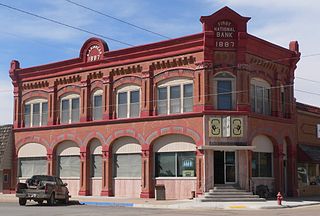
Ashland is a city in and the county seat of Clark County, Kansas, United States. As of the 2010 census, the city population was 867.
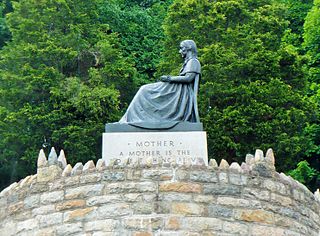
Ashland is a borough in Schuylkill County in the U.S. state of Pennsylvania, 15 miles (24 km) northwest of Pottsville. A small part of the borough also lies in Columbia County, although all of the population resided in the Schuylkill County portion as of the 2010 census. The borough lies in the anthracite coal region of eastern Pennsylvania. Settled in 1850, Ashland was incorporated in 1857, and was named for Henry Clay's estate near Lexington, Kentucky. The population in 1900 was 6,438, and in 1940, 7,045, but had dropped to 2,817 at the 2010 census.

Ashland Park is a historic early 20th century neighborhood in Lexington, Kentucky, United States. It was named after Ashland, the estate of Kentucky statesman Henry Clay which is located in the eastern portion of the neighborhood. The 600-acre (2.4 km2) development was designed by the famous landscape architecture firm the Olmsted Brothers of Massachusetts. The neighborhood belongs to the National Register of Historic Places.
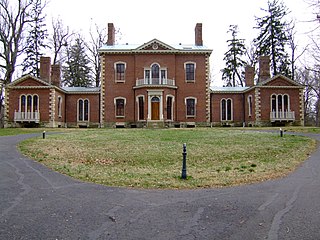
Ashland is the name of the plantation of the 19th-century Kentucky statesman Henry Clay, located in Lexington, Kentucky, in the central Bluegrass region of the state. It is a registered National Historic Landmark. The Ashland Stakes, a Thoroughbred horse race at Keeneland Race Course that has run annually since the race course first opened in 1936, was named for the historically important estate.

The University of Kansas Natural History Museum is part of the University of Kansas Biodiversity Institute, a KU designated research center dedicated to the study of the life of the planet.

This is a list of properties and historic districts in Missouri on the National Register of Historic Places. There are NRHP listings in all of Missouri's 114 counties and the one independent city of St. Louis.

Ashland State Park is a public recreation area surrounding the 157-acre (64 ha) Ashland Reservoir in the town of Ashland, Massachusetts. The state park's 472 acres (191 ha) incorporate the entire shoreline of the reservoir which is abutted by the Warren Conference Center and Inn, Camp Winnetaska, a former Girl Scouts of the United States of America camp, and residential houses. The park is managed by the Massachusetts Department of Conservation and Recreation.

Scotchtown is a plantation located in Hanover County, Virginia, that from 1771–1778 was owned and used as a residence by Patrick Henry, his wife Sarah and their children. He was a revolutionary and elected in 1778 as the first Governor of Virginia. The house is located in Beaverdam, Virginia, 10 miles (16 km) northwest of Ashland, Virginia on VA 685. The house, at 93 feet (28 m) by 35 feet (11 m), is one of the largest 18th-century homes to survive in the Americas. In its present configuration, it has eight substantial rooms on the first floor surrounding a central passage, with a full attic above and English basement with windows below. It was designated a National Historic Landmark in 1965.
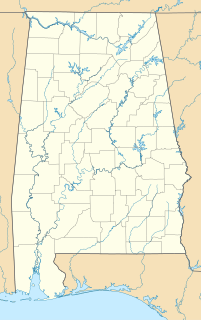
The Ashland Place Historic District is a historic district in the city of Mobile, Alabama, United States. The neighborhood gained its name from a Greek Revival antebellum house called Ashland that once stood on Lanier Avenue. Ashland was famous as the home of Augusta Evans Wilson. The house burned in 1926. The Ashland Place Historic District was placed on the National Register of Historic Places on June 23, 1987. It is roughly bounded by Spring Hill Avenue, Ryan Avenue, Old Shell Road, and Levert Avenue. The district covers 400 acres (1.6 km2) and contains 93 contributing buildings. The majority of the buildings date to the early 20th century and cover a variety of historical architectural styles ranging from late Victorian to the Craftsman styles.
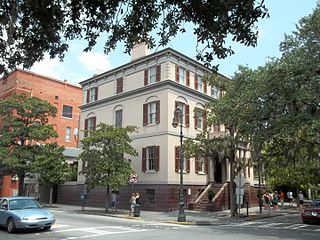
Juliette Gordon Low Historic District consists of three buildings—the Juliette Gordon Low Birthplace also known as "Wayne-Gordon House", First Girl Scout Headquarters which was the carriage house for the Andrew Low House, converted for use by the Girl Scouts in May–June 1912, and the Andrew Low House, is a site in Savannah, Georgia significant for its association with Juliette Gordon Low and the founding of the Girl Scouts of the USA.

The Cimarron Redoubt was an improvised U.S. Army fortification south of the city of Ashland in Clark County, Kansas, United States. Built in 1870 near a major trade route's crossing of the Cimarron River, it was later used for a variety of civilian purposes, including a post office. Today, it lies abandoned amid farm fields in southern Center Township.
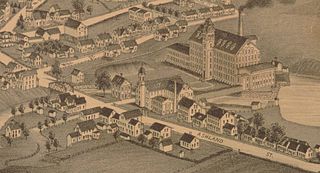
The Ashland Mill Bridge was a lenticular pony truss bridge over the Pachaug River in Griswold, Connecticut that was built in 1886 by the Berlin Iron Bridge Company. It was built following the Ashland dam break of February 1886 which washed away the previous bridges. The bridge served the millyard of the Ashland Cotton Company, in the Jewett City section of Griswold. The bridge was 65 feet (20 m) long and crossed a millrace on a skew angle. The Ashland Mill was damaged by arson in March 1995 and subsequently torn down, but the bridge itself remained. By 1999, the town deemed the bridge unsafe and closed it, and by February 1999, the bridge was moved to a vacant parking lot and was replaced with a new bridge. The bridge was added to the state of Connecticut historic register and it was later added to the National Register of Historic Places in April 1999. It was removed from the National Register in February 2016.

Frank Chamberlain Clark (1872–1957) was an American architect active in Southern Oregon. Many of his works are listed on the National Register of Historic Places (NRHP).

The Hope Girl Scout Little House is a historic log house near the junction of Jones Street and Fair Park in Hope, Arkansas. It is a single-story log structure, built in 1938 with funding from the Works Progress Administration. It was designed by Washington, DC architect Donn Barber as a demonstration home for a family with modest income, and afterward served for a quarter century as the principal meeting place of the local Girl Scout organization.

The Stockgrowers State Bank, located at 8th and Main Sts. in Ashland, Kansas, was built in 1887. It has also been known as First National Bank, for whom the building was first built, and which operated for about a year. It was listed on the National Register of Historic Places in 1972.
The Bear Creek Redoubt near Ashland, Kansas was listed on the National Register of Historic Places in 1978.
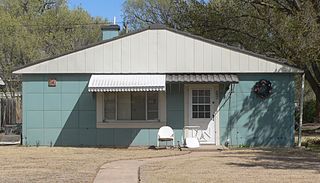
The Stein House at 420 Cedar St. in Ashland, Kansas is a three-bedroom Westchester Deluxe model Lustron house built in 1950. It was listed on the National Register of Historic Places in 2001.

The Ashland Grade School, located at 210 W. 7th St. in Ashland, Kansas, was built in 1937 with Public Works Administration funding. It was listed on the National Register of Historic Places in 2005.

The Women's Civic Improvement Clubhouse, at 59 Winburn Way in Ashland, Oregon, was built during 1921–22. Its construction was funded by the Ashland Women's Civic Improvement Club and the philanthropy of Jesse Winburn. It was listed on the National Register of Historic Places in 1989.



















